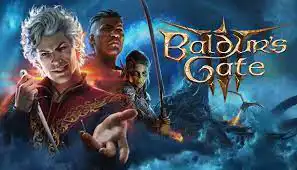One of the major pleasures of engaging with a quality video game such as Baldur's Gate 3 is the emotional investment we develop towards characters we encounter within the game's universe. Falling for a character, cherishing their quirks, and ultimately feeling a profound connection with them are amongst the emotional pinnacles of an immersive gaming experience.
However, sometimes, the characters that we grow so fond of don't turn out as we expect. They either lack certain attributes we hold dear or take the storyline in a direction we hadn't hoped for. This can leave gamers feeling somewhat let down and can even break their immersion in the game.
In Baldur's Gate 3, there are quite a few characters that fall under this category. Let's explore some of these characters and understand why they didn't meet the expectations of the gamers.

First up, let's discuss Astarion. Astarion is a vampire spawn and an accomplished rogue, which should make him intriguing. However, players have voiced disappointment over the fact that his vampiric nature doesn't impact the game as much as they had hoped.
Rather than making him an imposing and fearsome creature of the night, his vampire side feels more like a cosmetic element. It doesn't influence his character development or contribute much to the story, which has been a letdown for many.
In contrast, there's the character of Shadowheart - a complicated and complex character. Her secretive nature and the lack of clarity about her true agenda were expected to add intrigue to her character. However, for some players, these characteristics make it challenging to form a connection with her.
The fact that she remains somewhat aloof and detached from the storyline further adds to the players' frustration about Shadowheart. More backstory or a deeper exploration of her character could have helped players forge a stronger bond with her.
Next, let's discuss Wyll. The main dissatisfaction about Wyll comes from the difference between expectations set by his initial description and how he turns out in the game. Players were introduced to a heroic character known as the 'Blade of the Frontiers'.
However, during gameplay, Wyll comes off as more of a background character rather than a hero. He seems detached from the epic storyline, and for many players, Wyll's character falls flat when compared to the initial image painted of him.
A similar case happens with Gale. Initially introduced as a powerful wizard, the game develops him as a character beleaguered by his inner demons. But the latter trait often overshadows his initial appeal as a wizard, leaving players disillusioned.
The internal struggles reduce the awe usually reserved for a wizard of his stature, bringing forth a vulnerability that not everyone finds appealing. While character depth is important, in Gale's case, it's perceived as excessive, making him less engaging to some.
Lastly, let's talk about Lae'zel. She is set up as a Githyanki warrior, rigid and unwavering in her determination, which should inspire respect. However, her constant disdain towards situations and people have made many players perceive her as arrogant.
Despite her being a mighty warrior, players find it hard to connect with Lae'zel due to her unrelenting condescension. If she showed some vulnerabilities or a softer side, players might have been more forgiving towards her character.
It's important to note that unmet expectations from these characters do not necessarily make Baldur's Gate 3 a bad game. It just means that the characters did not meet the individual perceptions and anticipations of some players.
How we perceive a character is largely based on our own experiences, preferences, and what we seek in a story. The developers cannot cater to everyone's personalized expectations, and there are bound to be disappointments.
From another aspect, these varied characterizations weave a tapestry of diverse characters that add depth to the narrative of the game. They enhance the versatility of the game, making it appealing to a broader audience.
Moreover, it creates an opportunity for players to revisit the game, hoping to unearth hidden depths and understand the characters from a fresh perspective. This opens up space for gamers to have varying and dynamic experiences each time they pick up the game.
Perhaps, this is crucial in understanding the importance of complex characterizations in Baldur's Gate 3. Each character seems explicitly designed to provoke varied emotions, leading to a unique gaming experience.
We ought to appreciate the developers for their brave choices in creating such distinctive characters, knowing well they might polarize opinions. Such moves show their commitment to risk-taking in the name of creativity.
The essence of it all is to understand that broken hearts in the realm of Baldur's Gate 3 are not due to poor game design but a testament to the game's influence to make the players feel deeply about their characters.
In the end, Baldur's Gate 3, with all its diversity and complexity, provides an enriching gaming experience that bestows upon gamers a myriad of perspectives, emotions, and connections. It invites players to look beyond their set expectations and appreciate the layered complexities that it has to offer.